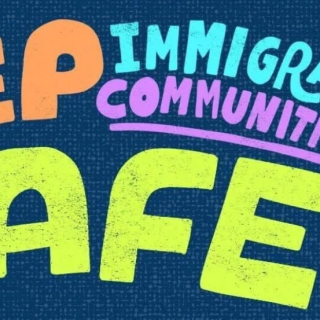Infant mortality, while being a tragedy on its own, is a bellwether statistic that indicates deep structural issues – structural issues that won’t go away with all the training and education in the world.
On February 13 at West High School, the Mayor Ginther in his ‘State of the City’ address rolled out what he dubbed his “Equity Agenda.”
“Racism is real,” Ginther said, looking solemn. “Discrimination is real. And they impact the lives of many of our neighbors every day.”
The leading edge of Ginther’s “Equity Agenda” is the push to lower infant mortality in Columbus, or the rate at which infants die before their first birthday. While tragic in its own rite, this issue is also often used as a measuring stick for societies – disparity in healthcare access, housing, nutrition, and many other aspects of life are reflected in infant mortality rates.
And, though nicknamed the ‘Opportunity City’ by some overzealous politicians, Columbus has consistently struggled with high infant mortality rates. In 2011, Columbus had an infant mortality rate of 9.6 per 1,000 births. That was significantly higher than the United States national average, at 6.05.
But to be clear, the United States itself is not the best indicator for what cities should be aiming for. Out of 36 ‘economically developed’ countries, the US ranks near dead last – 33 out of the 36. The United Health Foundation said that over the past 10 years, the US has been 75 percent higher than the average in comparably developed countries.
The reason this is the leading edge of Ginther’s stated crusade against racism, though, is because it is a uniquely poignant expression of racial disparity. Columbus’s infant mortality rate for white babies has, for years, been either at or below the national average. The mortality rate among the city’s black babies is considerably – and scarily – higher. In fact, if one were to place the statistic for Columbus’s black infant mortality rate alongside the world’s developed countries, it would truly rank last, at 12.6 per 1,000 in 2018.
To put it more simply – in Columbus, nearly three infants die before their first birthday every week. Two-thirds or more of them are black children.
This issue, most clearly expressed among the black community, constitutes a serious social health crisis – one indicating a lack of access to the basic services and security necessary to start a family.
What is Being Done?
After the City of Columbus determined the extent of the problem six years ago in 2014, it became a stated priority of the local government. They launched CelebrateOne, a public initiative whose purpose was to bring down infant mortality by 40 percent and half the racial disparity by the end of 2020.
However, despite that goal being set to expire at the end of this year, that gap is still extremely wide. From 2014 to 2018 (the last year for which there is complete data), the infant mortality rate only came down by around 10 percent, and the racial disparity is – as Ginther admitted in his speech – completely unchanged.
There has been, however, some limited successes. CelebrateOne has made significant progress lowering sleep-related deaths by hosting training sessions on how parents should ‘sleep’ their babies.
At a training in early February, organizers with CelebrateOne and Columbus’s Somali community explained to a room full of local residents both the urgency surrounding infant mortality and how it acts as a social health indicator.
“Let’s say you live in an unsafe neighborhood,” said Sarah Posten, organizer with CelebrateOne, to an audience of community members. “Maybe there was a robbery in your building last week… If you’re living in an unsafe environment, this affects your choices – so you decide the safest place for your infant to sleep is right next to you, so if anything happens you can get to them, rather than sleeping your baby alone in their crib.”
At this, the room nodded in understanding. A dialogue immediately began among those in attendance – how in an unsafe neighborhood, everything was scary. One woman even said she jumped at the sound of the dumpsters being collected every week, because it closely resembled the sounds of violence in her community that she’d come to recognize.
As Posten taught in the training, the safest way to sleep an infant is to put them on their back in a crib with no obstructions like toys or pillows, so infants don’t choke in their sleep. But understandably, many in the room admitted to either keeping their infant in their own bed with them at night, or admitted to seeing a relative do similar, largely out of fear.
According to city data, in the first nine months of 2019, CelebrateOne distributed over 1,200 cribs and trained over 900 people in safe sleep practices. While limited progress has been made in lowering the overall infant mortality rate, the racial disparity has not budged.
What Will It Take?
The role of CelebrateOne is primarily one of connection – connecting parents to resources like cribs, stable housing, and childcare training. All of that heroic work, however, is fighting a battle with the reality of Columbus as a city of deep economic inequality. As of 2017, 57% of Columbus families had less than $2,000 in savings. This inequality also runs deepest through race – while white households’ annual median income in Franklin County rose in 2017 from $69k to $70k, that of black households went down, from $38k to $37k.
What will it take to truly lower Columbus’s infant mortality? In a way, this question can be rephrased as, “what will it take to make Columbus a safe place for infants to grow up?” This question encompasses everything, from housing, to public education, to wages, to healthcare, and would require massive public investment in all of the above. Improving social welfare nets and infrastructure is the only way to make a significant dent in not just infant mortality, but the massive economic burdens on the black community that make it uniquely affected.
The good news, however, is that all these things are possible. If Columbus wants to play a leading role in battling infant mortality, aspiring not just to national averages but to an international standard, the road forward is wide open. Education and training is a good start, but there’s a world more work to do.



